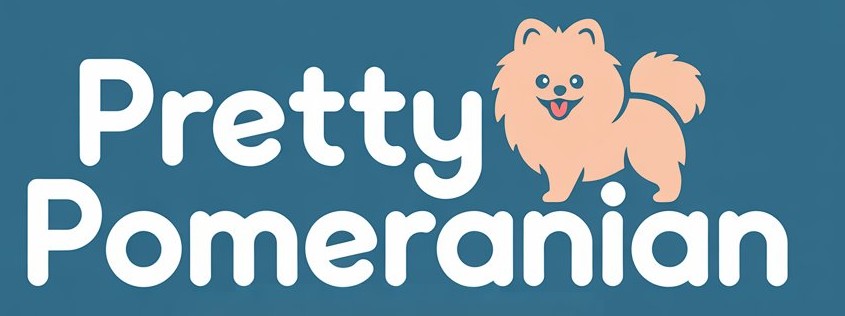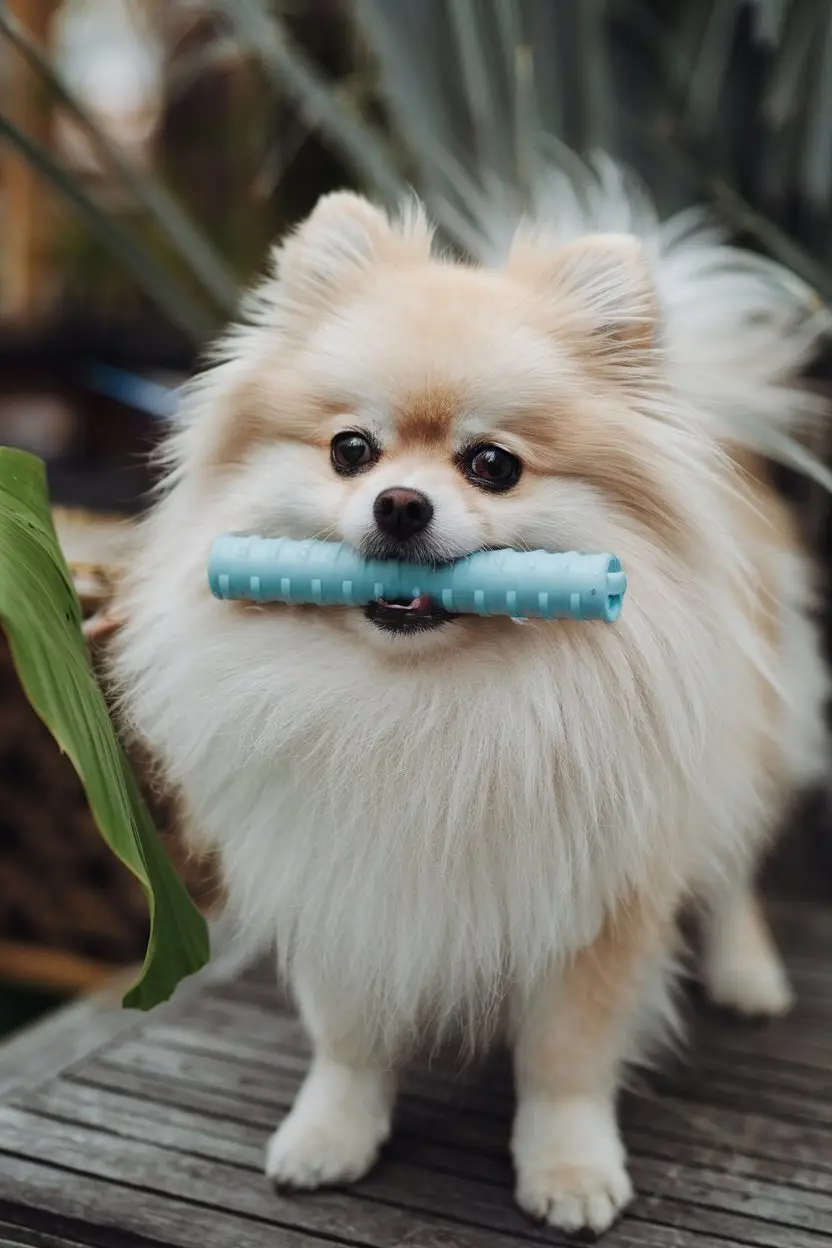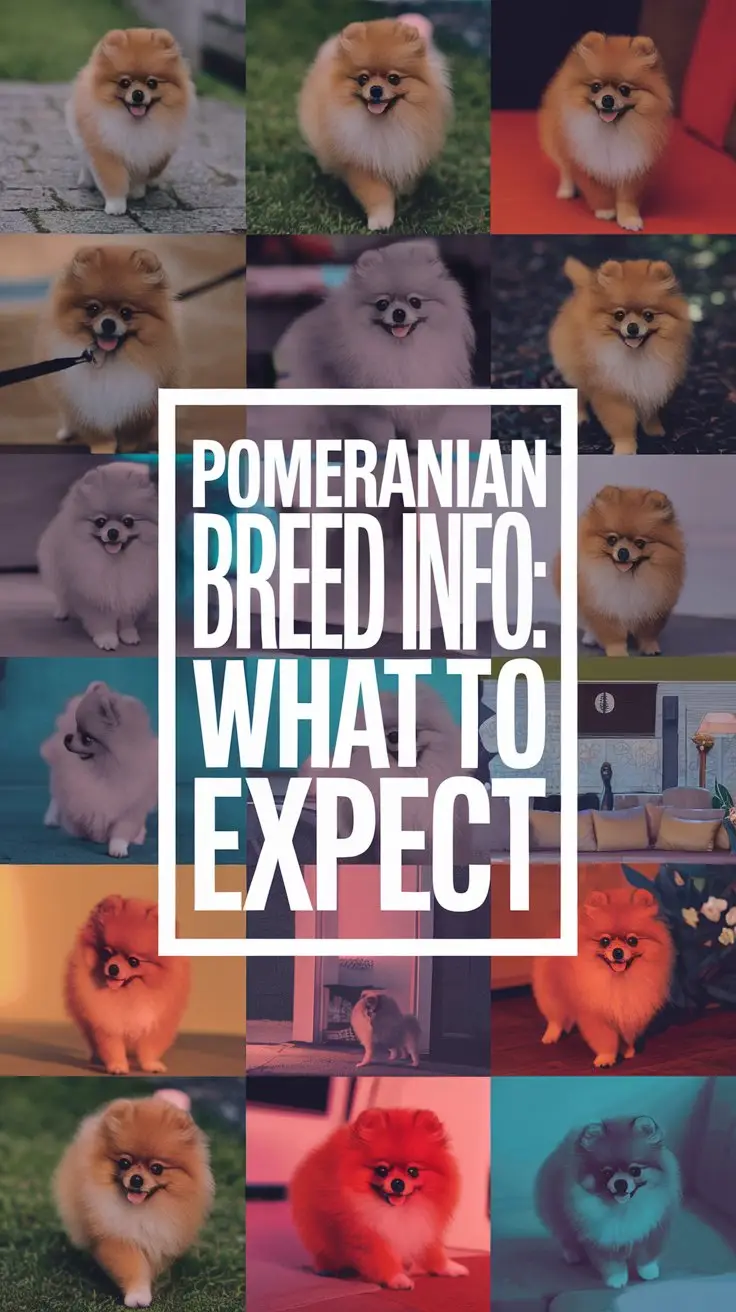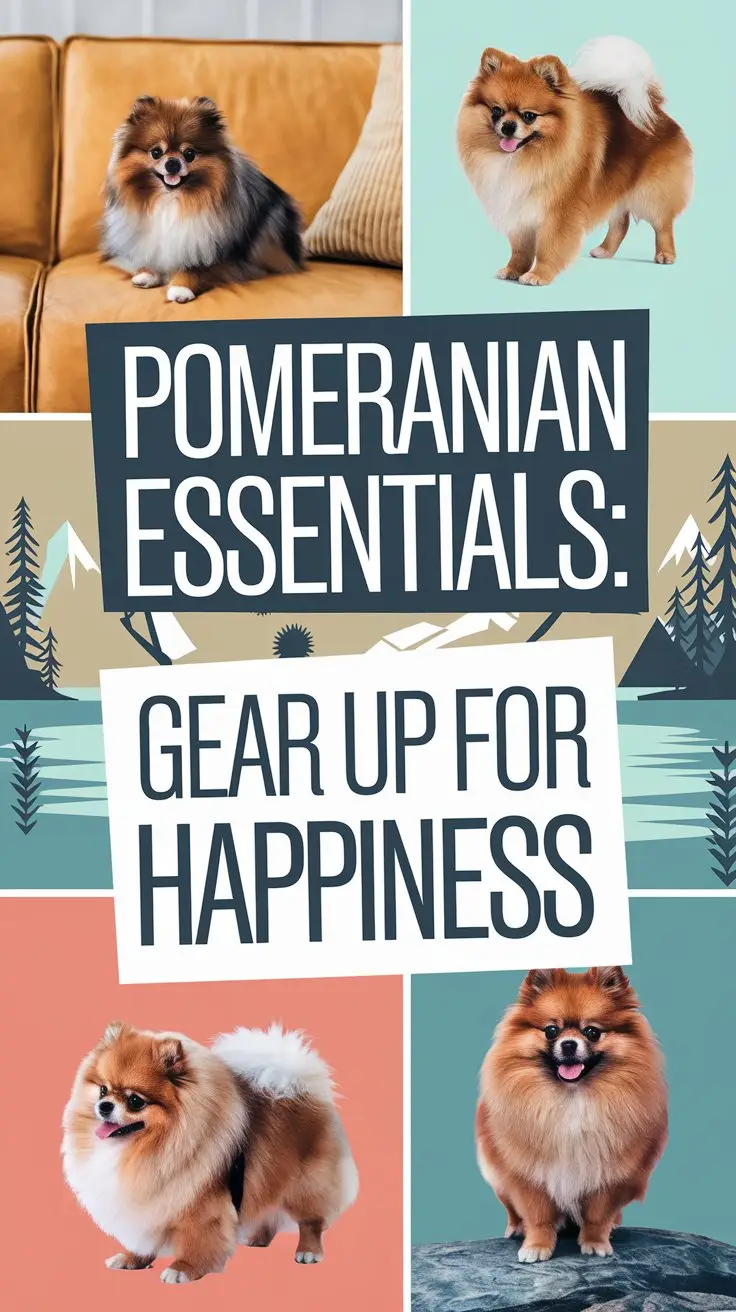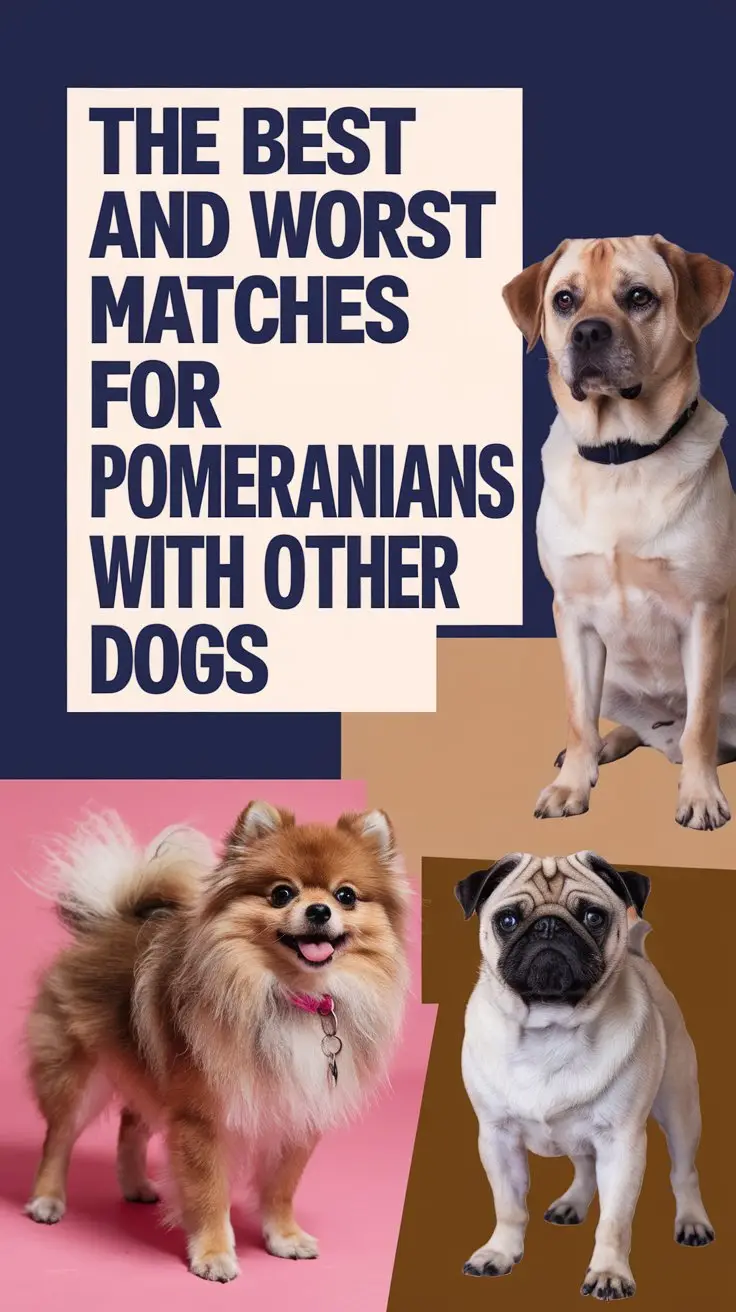First thing’s first – make your place safe for your fluffy friend by putting up baby gates, keeping those pesky power cords out of reach, and setting up spots for their food, water, and naps.
Training your little buddy is super important – keep it fun and quick with lots of treats and praise while teaching them the basics like sit, stay, and come when called.
These tiny pups need exercise, but don’t go overboard – two short walks of 15-20 minutes each day plus some playtime indoors will keep them happy.
That gorgeous double coat needs regular brushing, and don’t forget vet check-ups and good quality small-breed dog food to keep them healthy.
Just remember, there’s a whole lot more to being a great Pom parent than what we’ve covered here!
Preparing Your Home
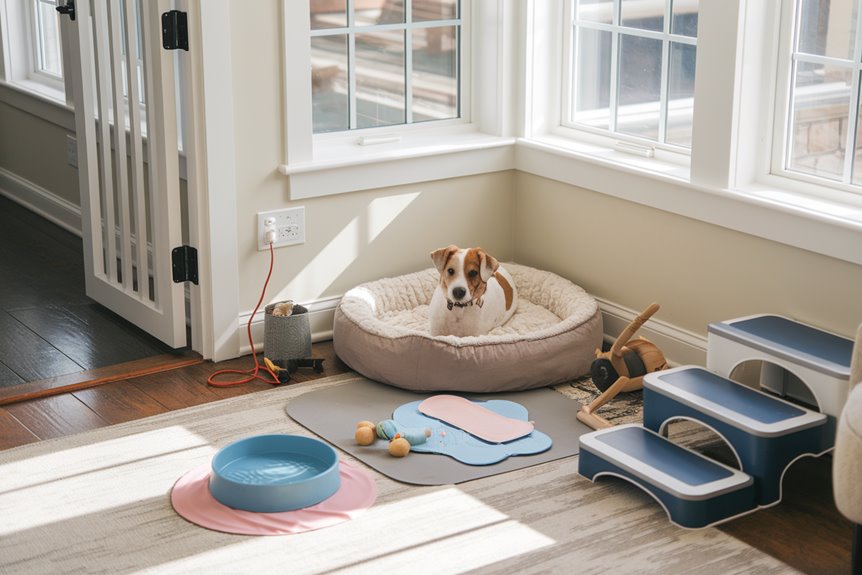
Getting your place ready for a Pom needs some good planning to keep your furry friend safe and happy. Start by putting up baby gates so your little pup has safe zones to sniff around without getting into mischief. Take away anything they might chew or swallow, and make sure trash cans and food are somewhere they can’t reach.
Pick a special spot for their bed, crate, and water bowl. You’ll want to cover up power cords, put away loose stuff, and block off stairs. Before your Pom comes home, grab all the basics – good food, tough toys, and stuff to keep their fluffy coat looking nice. Set up a spot where you can brush and groom them, and make sure they have a quiet corner to chill when things get too busy. Keep checking around your house now and then to spot anything new that might cause trouble. Regular mental stimulation toys can help redirect your Pom’s natural chewing instincts and prevent destructive behavior.
Training Your Pomeranian
Hey, getting your Pom trained isn’t too hard once you’ve got your home ready. Just remember to start early with quick training sessions since these little furballs can get distracted pretty easily. The key is keeping things fun – give them tasty treats and lots of praise when they do something right.
Start with the basics – teaching them to sit, stay, and come when called. Then you can work up to the fancy stuff later. Make sure everyone at home uses the same words when giving commands, or your pup might get mixed up. And yeah, these little guys love to bark! Nip that habit in the bud early by not giving in when they bark for attention, and make a big deal when they’re being quiet.
A crate can be super helpful for potty training and giving them their own little den. Just make sure your pup sees it as their happy place – never use it to punish them. Stick with it and be patient – your Pom will get there! Remember, these smart little pups just need time and lots of love to learn the ropes. Using a consistent positive reinforcement technique will help your Pomeranian develop good habits more quickly and effectively.
Daily Exercise Requirements
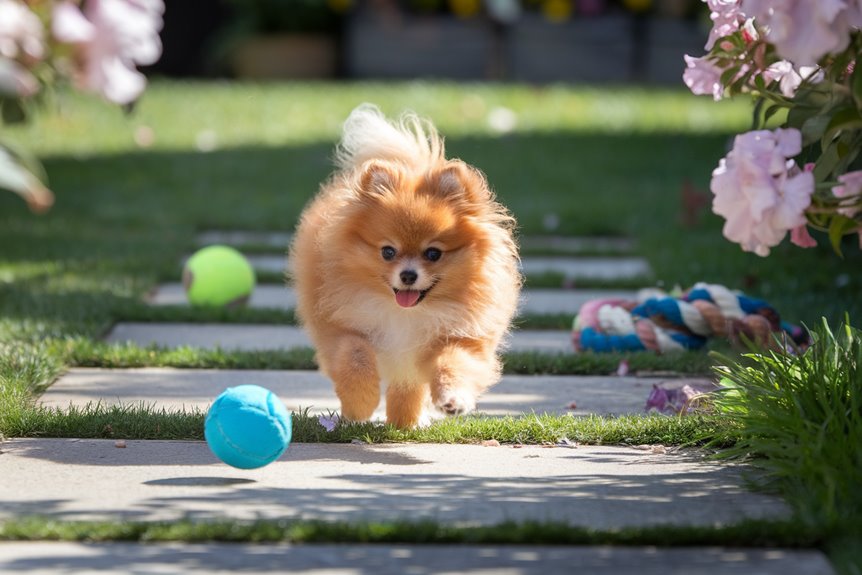
Exercise is super important for your Pom, even though they’re tiny pups! Plan on taking them out for two walks each day, around 15-20 minutes each. Don’t forget to play with them inside too – they love that!
You don’t need to go crazy with workouts – just keep things light and fun. Your furry friend will have a blast chasing balls, playing gentle tug-of-war, or messing around with toys that get their body and brain working. Just keep an eye on them when it’s hot outside, since these little furballs can get overheated pretty fast.
When the weather’s nasty, there’s plenty of fun stuff to do inside. Try making a mini obstacle course with pillows and boxes, or play hide-and-seek with treats – they’ll love it! Just remember to take it easier if your Pom is older or not feeling 100%, and adjust playtime based on how energetic they’re feeling that day. Regular daily exercise sessions help prevent destructive behaviors like excessive barking and chewing that often result from boredom.
Managing Barking Behaviors
Heads up – these little Poms love to bark at literally everything! Whether it’s some random truck going by or just leaves falling, they’ll let you know about it. While it’s awesome they’re such great watchdogs, all that barking can drive you (and your neighbors) a bit nuts. Better start training them early with lots of positive vibes and practice.
When your fluffball starts yapping, don’t give them any attention – that’s exactly what they want! Just teach them to be “quiet” and give them treats when they zip it. Figure out what sets them off so you can deal with the real problem.
Separation anxiety could be triggering excessive barking when you’re away from home.
- Give them yummy treats right when they stop barking
- Get them interested in toys or commands when you see something that usually gets them going
- Keep yourself chill so you don’t get them more worked up
- Stick to a schedule – it helps them feel safe and less bark-happy
- Try giving them some fun puzzle toys to keep their busy little brains occupied
Regular Grooming Routines
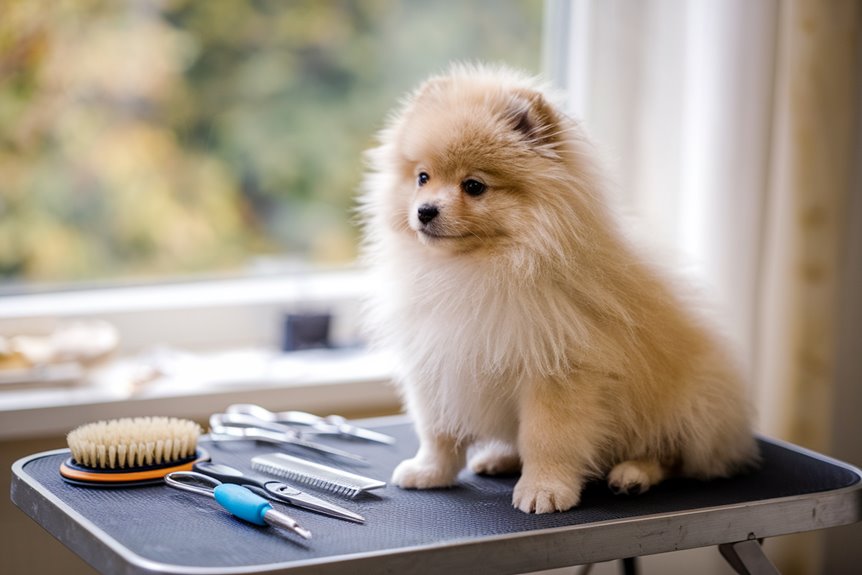
Taking care of a Pom’s fluffy double coat is quite a job – but hey, it’s totally worth it! You’ll want to grab a double-ended bristle brush and give your furry friend a good brushing several times each week to stop those pesky mats and tangles from forming. While you’re at it, run your hands through their fur to feel for any weird spots, skin problems, or bumps.
But it’s not just about the fur! Your Pom needs other TLC too. Make sure to brush those tiny teeth regularly (nobody wants stinky breath!), and keep those little nails in check by trimming them every 2-4 weeks. Don’t skip cleaning around their eyes and ears during your grooming time. And since these little fluffballs shed like crazy, regular brushing helps keep your house from turning into a fur festival. Pick specific days for grooming – it’ll make things way easier for you and your pup to stick to a routine. You’ll notice seasonal coat changes in spring and fall when your Pom sheds more heavily to adjust to temperature changes.
Health and Wellness Checkups
Just going to your vet twice or three times a year helps keep your Pom happy and healthy. These check-ups let your vet keep an eye on your pup’s heart, teeth, and weight – catching any problems before they get serious. Don’t forget about shots and meds to keep those pesky parasites away! Since Poms can run into issues like wobbly kneecaps and breathing troubles, it’s super important to stay on top of their health. Your Pom may need special attention for progressive retinal atrophy, which can affect their vision over time.
Things to remember:
- Get those teeth cleaned once a year – nobody wants stinky breath or bad teeth!
- Watch their weight – these little furballs shouldn’t get too chunky
- Keep up with shots to avoid nasty illnesses
- Make sure the vet checks their heart regularly
- Yearly blood tests help spot any problems with their organs or thyroid
Building Trust and Companionship
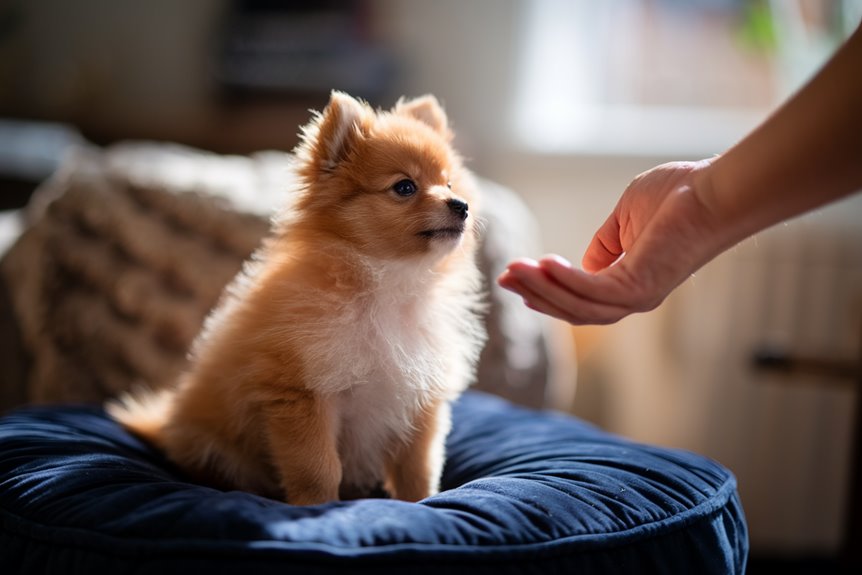
Getting your Pom to trust you takes plenty of daily love and care. You’ll need to hang out together doing fun stuff like gentle brushing, playing games, and learning new tricks. When your pup does something good, make sure to give lots of treats and praise – it really helps you two bond!
Your furry friend will feel safer when they know what to expect each day, so try to stick to the same times for meals, walks, and snuggle time. Pay attention to what makes your Pom comfy or nervous, and don’t push them into anything they’re not ready for. Let them come to you for pets and attention, and when they do, show them how happy you are with yummy treats and loving words. Just keep in mind that every Pom has their own quirky personality, so what works for one might not work for another – it’s all about finding what clicks with your little buddy. Remember that Pomeranian puppies sleep for 18-20 hours daily, so respect their need for plenty of rest to maintain their well-being.
Creating Safe Play Areas
Making safe play spots for your Pom is super important to keep them from getting hurt and lets them run around without worry. You’ll want to set up special areas inside and outside where your little fluffball can have fun without any risks. Just make sure you check these spaces often to spot anything dangerous like tiny objects they could eat, harmful plants, or holes in the fence they might squeeze through. Having a bathtub mat grip during grooming time will help prevent slips when playtime leads to necessary baths.
- Put up strong baby gates to keep them in the good zones and out of the not-so-safe ones
- Get tough outdoor fencing (at least 4 feet high) with really tight gaps (no bigger than 2 inches)
- Get rid of any plants that could make them sick, cleaning stuff, and little things they might try to eat
- Put comfy spots to rest and water bowls where they can easily get to them
- Make fun zones with different surfaces and safe toys to keep their minds busy
Nutritional Guidelines
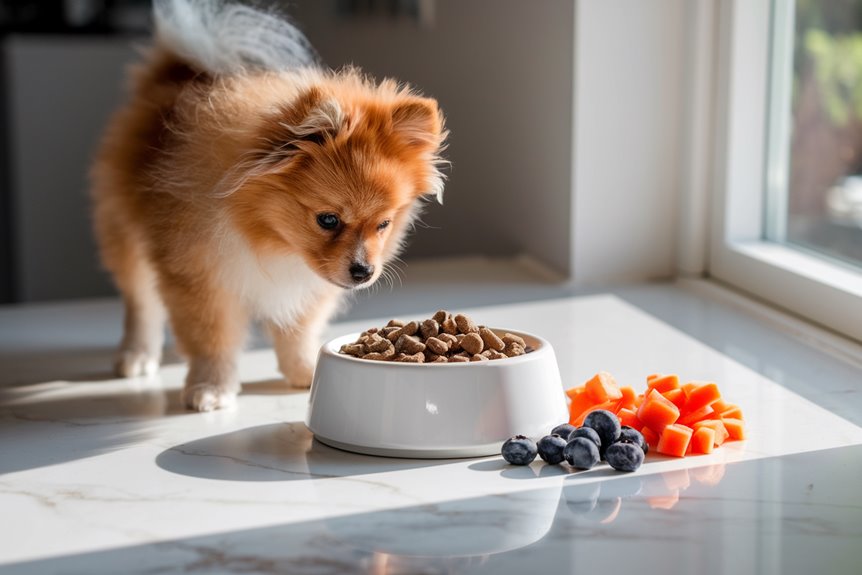
Hey, feeding your Pom right is super important since they’re such tiny pups! Pick out some good quality small-breed dog food that’s got all the right stuff – you know, proteins, fats, and carbs.
Keep an eye on how much they eat because nobody wants a chubby Pom – it’s not great for their joints or heart. Split their food into two or three small meals each day. Training treats are fine, but don’t go overboard – keep them under 10% of what they eat daily. If your pup seems iffy with certain foods or gets the sniffles, check with your vet about special food options. And heads up – your Pom’s food needs will change as they grow up and depending on how active they are, so you’ll need to switch things up now and then.
You can add healthy fruits and vegetables to their diet for extra nutrients and fiber, but always avoid toxic ones like grapes, raisins, and onions.
Socialization and Play Time
Turning your Pom into a social butterfly starts when they’re super young. You’ll want to get your little fluffball out there meeting different people, friendly dogs, and checking out new places during those key puppy weeks. Setting up fun playdates, taking them to pet stores, and slowly showing them new stuff will help them grow up brave and friendly instead of scared.
- Hang out with other vaccinated pups their size
- Let your Pom check out different floors, noises, and places
- Get them to meet all sorts of people in quick, fun ways
- Make mini obstacle courses inside for brain games
- Play with them every day using different toys
Keep an eye on how your Pom acts during these meetups – if they seem nervous, don’t push it! Just back off and try again later, taking it slower next time. Your pup will let you know when they’re ready to be more social. Early socialization and training are crucial steps in preventing aggressive behaviors as your Pomeranian grows older.
Frequently Asked Questions
Why Do Pomeranians Tilt Their Heads When You Talk to Them?
When your little Pom does that adorable head tilt, they’re actually trying to figure out where sounds are coming from, catch every bit of your voice tone, and show they’re super interested in what you’re saying. Think of it as their cute way of saying “I’m listening!” and trying to make sense of the human chatter. It’s just like when we lean in closer to hear something better – except way more adorable when they do it!
How Old Can Pomeranians Typically Live With Proper Care?
Your Pom can stick around for about 12-16 years if you take good care of them. Most of these little fluff balls make it into their early teens, and some even hit 16 or more when they get the right food and regular vet checkups. It’s pretty amazing how long these tiny pups can live when they’re well-cared for!
Can Pomeranians Swim Naturally, or Should They Wear Life Jackets?
Your Pom can doggy paddle, but they aren’t exactly built for the water, and their fluffy double coat gets super heavy when wet. It’s best to pop a life jacket on them and keep a close eye on them whenever they’re near water.
Do Pomeranians Change Color as They Grow Older?
Hey, it’s just like watching a super-slow color switch – your Pom’s fur actually changes shades as they get older! Their puppy fluff might go lighter or darker, and you’ll really notice the biggest changes happening before they hit their first birthday.
Why Do Pomeranians Spin in Circles Before Lying Down?
Your Pom does that funny circle dance before flopping down because it’s stuck in their DNA from way back when their great-great-great wolf grandparents had to smoosh down grass and make sure no bad guys were around. It’s just like how they’re wired to make their sleeping spot comfy and safe – pretty much a leftover habit from their wild days!
